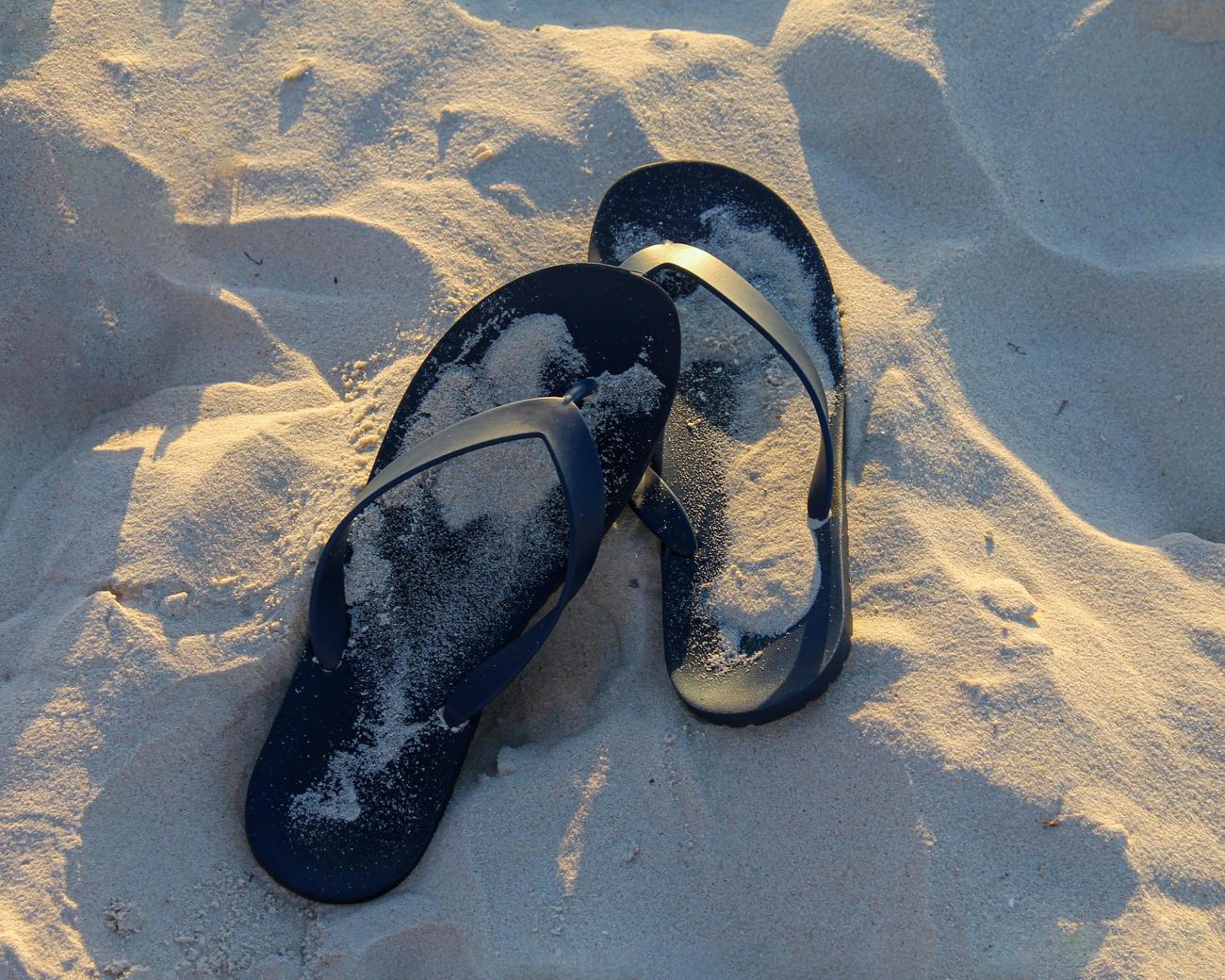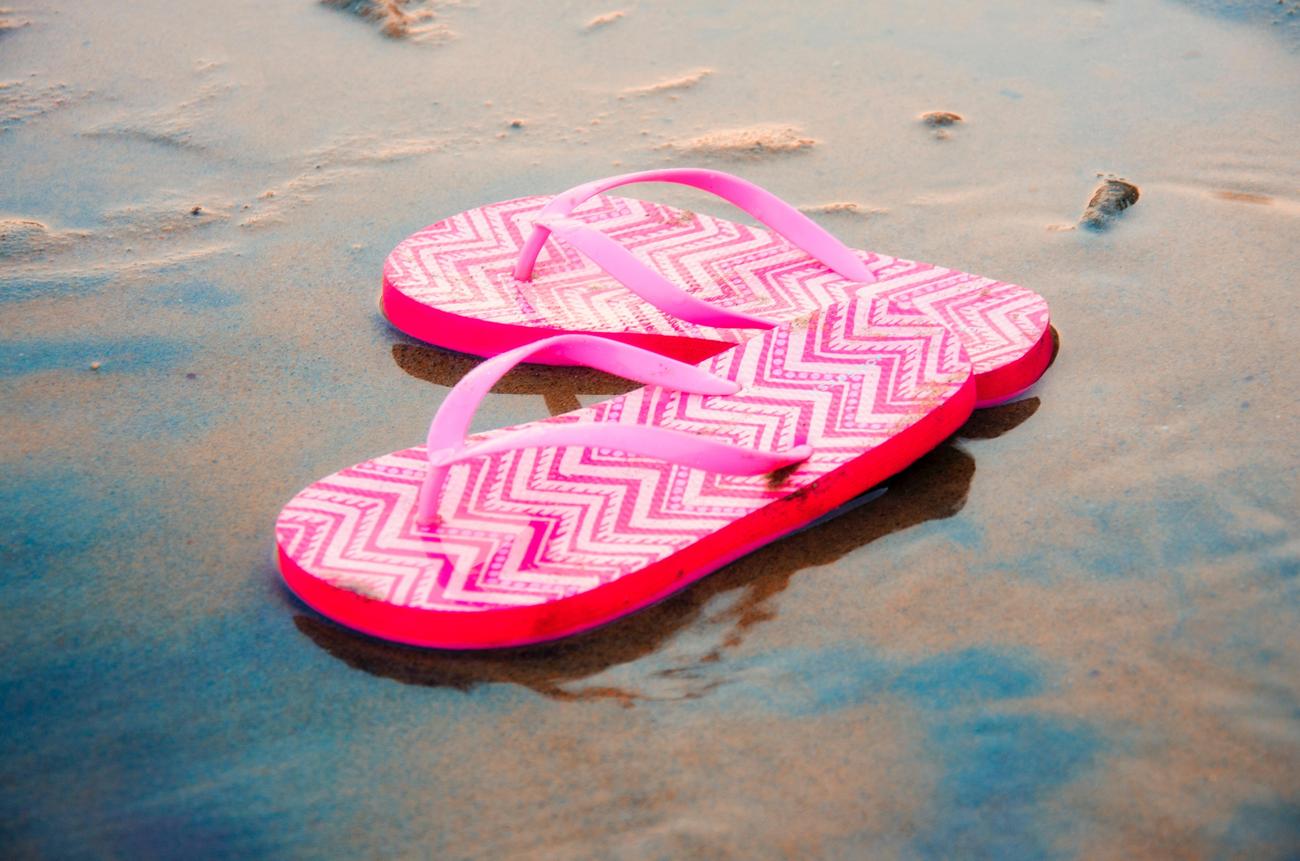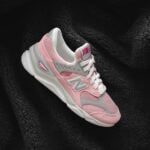Are you ready to dive into the world of flip flops? Strap in as we embark on a fascinating journey through the evolution and impact of this beloved footwear. In this article, titled “Fascinating Fun Facts about Flip Flops: Unearthing the Evolution and Impact,” we will unravel the history of when flip flops became popular and explore their cultural significance throughout the ages. From their humble beginnings as ancient footwear worn by our ancestors to their modern-day status as a fashion statement, these flip flops have come a long way. Get ready to be captivated by the intriguing tales and surprising details that make flip flops not just a practical choice, but also a symbol of freedom, comfort, and individuality.

Fun Facts about Flip Flops
Unearthing the Evolution and Impact
Flip flops, those humble and iconic summer footwear, have a fascinating history filled with interesting tidbits. From their origins in Japanese zori to their popularity among American soldiers during World War II, these simple sandals have made quite a cultural impact. So, let’s dive into some fun facts about flip flops and explore their evolution and societal significance.
1. The Japanese Connection
Did you know that flip flops trace their roots back to Japan? It’s true! Flip flops, or zori as they are known in Japanese, have been around for centuries. Originally made with straw soles and fabric thongs, these shoes were a staple in Japanese culture. They were primarily worn with traditional garments like kimonos, providing an elegant and comfortable footwear option.
“Flip flops, also known as zori in Japan, have deep cultural roots and were traditionally worn with kimonos.”
2. A Souvenir from War
During World War II, American soldiers stationed in Japan discovered these comfortable and lightweight shoes. Recognizing their practicality and comfort, many soldiers brought back pairs of zori as souvenirs. The popularity of these sandals soared as returning soldiers shared their love for them, introducing flip flops to the United States and kickstarting their global journey.
“Flip flops gained popularity in the United States after American soldiers brought them back as souvenirs from Japan during World War II.”
3. Summer Vibes and Beach Culture
By the 1960s, flip flops had firmly planted themselves as the epitome of summer fashion. With their easy slip-on style and casual appeal, they quickly became synonymous with beach trips and laid-back vibes. Whether strolling along the sandy shores or enjoying a leisurely day in the sun, flip flops became the go-to choice for anyone looking to embrace the carefree spirit of summer.
“During the 1960s, flip flops became synonymous with summer and beach culture, embodying the carefree and relaxed vibes of the season.”
4. The Sound of Flip Flops
Have you ever wondered why flip flops are called “flip flops”? Well, the name comes from the distinct sound that is made when walking around in them. The onomatopoeic term “flip flop” aptly describes the noise produced as the sandals slap against the feet. This unique sound has become an auditory symbol of summer, evoking memories of lazy days and carefree adventures.
“The name ‘flip flops’ originated from the sound that these sandals make when walking, adding a playful auditory dimension to their charm.”
5. The Foot Controversy
While flip flops may be lightweight and convenient, experts have mixed opinions about their impact on foot health. Some argue that the lack of arch support and minimal cushioning can lead to foot pain and discomfort, especially with prolonged use. However, others contend that when worn appropriately and in moderation, flip flops can be a viable and comfortable option for casual wear.
“Experts have differing opinions about the foot health implications of flip flops, with some cautioning against their lack of arch support and cushioning.”
Whether you’re a dedicated flip flop enthusiast or simply appreciate their easy, breezy style, these fun facts shed light on the history and impact of this beloved footwear. From their origins in Japanese culture to their association with summertime and beach culture, flip flops have journeyed from practical shoes to enduring symbols of relaxation and leisure.
So, slip on your favorite pair of flip flops, revel in the comfort they provide, and take a moment to appreciate their delightful simplicity.
Fun facts about flip flops:
Did you know that flip flops are not only a staple in summer wardrobes, but they also have a fascinating history? Let’s dive into some interesting trivia about these beloved footwear choices.
How did flip flops get their name? Contrary to popular belief, they were not initially called flip flops. Instead, they were referred to as “thongs” due to their simple design. To learn more about the origin of their name, click here.
If you’re curious about sandals in general, you’ll be pleased to discover plenty of intriguing facts. From their use in ancient civilizations to their various styles across cultures, sandals have a rich history. Uncover more captivating information by clicking this link.
One particular brand of flip flops, Havaianas, holds a fun and interesting fact. To unveil this fascinating tidbit about Havaianas, click here.
But wait, there’s more! Did you know that flip flops have gone through several name changes throughout history? Explore the original names these iconic footwear had by clicking this link.
Footwear, in general, has a plethora of intriguing facts waiting to be discovered. From bizarre shoe trends to mind-boggling statistics, the world of footwear is truly captivating. If you’re interested in knowing more fascinating facts about shoes, click here.
Finally, have you ever wondered why flip flops have such a devoted fan base? It’s not just because they’re comfortable and easy to slip on. There’s something about the carefree, laid-back vibe they exude that resonates with people. If you want to explore the reasons why people love flip flops, click this link.
So, grab a refreshing drink, put on your favorite pair of flip flops, and get ready to be amazed by the captivating world of these iconic sandals.
When Did Flip-Flops Became Popular
Flip-flops, those casual, lightweight sandals that have become synonymous with summer and relaxation, have a much longer history than you might think. While the modern version of flip-flops gained popularity in the United States in the 1950s, their roots can be traced back thousands of years. Let’s take a journey through time and explore the evolution and cultural impact of flip-flops.
Flip-flops have been around for centuries, with evidence of their existence dating back to ancient Egypt around 4000 B.C. Back then, they were made from papyrus leaves and fibers, showing that even our ancestors enjoyed the comfort and convenience of these simple sandals.
[quote] In fact, flip-flops are one of the oldest forms of footwear, highlighting their enduring appeal and timeless design.
Fast forward to the 1950s when flip-flops gained popularity in the United States. American soldiers returning from World War II brought back Japanese zōri, a type of traditional sandal. Women and children were the first to embrace these new sandals, and surfers soon joined in, cementing the connection between flip-flops and California’s vibrant surf scene.
[quote] As the carefree and easygoing beach culture of the 1960s took hold, flip-flops became the go-to footwear for those seeking a laid-back and carefree vibe. Their popularity soared, and they became synonymous with summertime.
But why are flip-flops so beloved? Apart from their association with sunny days and sandy beaches, flip-flops have several advantages that make them a perennial favorite. For one, they are incredibly affordable and accessible, making them a staple in many households. Additionally, their minimal design allows for easy slipping on and off, making them ideal for quick trips or lounging at home. Plus, who doesn’t love the satisfying flip-flop sound they make with every step?
[quote] Flip-flops perfectly embody simplicity and versatility, offering a carefree style that’s hard to resist.
While the name “flip-flops” wasn’t officially assigned until 1966, these sandals were previously known as “thongs.” This change in name not only gave them a more playful and fun image but also helped distinguish them from a more intimate type of undergarment bearing the same name. It’s amazing how a simple rebranding can have such a significant impact on their popularity.
[quote] So, next time you slip on a pair of flip-flops, take a moment to appreciate the history and nostalgia that comes with these simple yet iconic sandals.
Today, the flip-flop industry is a thriving one, with an estimated value of $20 billion in 2009. They are made from a wide variety of materials, including rubber, foam, and even leather, giving consumers plenty of options to choose from.
[quote] With their long-standing history and enduring popularity, flip-flops are more than just a fashion statement. They have become a symbol of freedom, relaxation, and summertime vibes.
So, whether you’re strolling along the beach, running errands, or simply enjoying a lazy day, take a moment to appreciate the humble flip-flop and its remarkable journey through time.
Table:
| Fun Facts about Flip-Flops |
|---|
| Flip-flops have been around for thousands of years. |
| The modern flip-flop gained popularity in the United States in the 1950s. |
| Flip-flops are known for their simplicity and versatility. |
| The name “flip-flops” was officially assigned in 1966. |
| The flip-flop industry was valued at $20 billion in 2009. |
[quote] Fascinating, isn’t it? These simple sandals have a rich history and continue to captivate people around the world with their carefree charm.
Flip-Flops: The Footwear Our Ancestors Wore
Flip-flops, those beloved summer shoes that bring a carefree vibe to our toes, have a surprising history that traces back to our ancestors. These iconic sandals have been worn by people from various cultures throughout history, starting way back in ancient Egypt around 1,500 B.C. Imagine, all those years ago, people were already slipping on these flimsy-yet-comfortable shoes!
In ancient Egypt, flip-flops were crafted using materials like papyrus and palm leaves. It’s incredible to think that our ancestors were walking around in footwear made of natural resources. But the use of unique materials didn’t stop there. In Africa, rawhide was used to make flip-flops, while in China and Japan, rice straw was the material of choice. The indigenous people of Mexico turned to the yucca plant, while in India, wooden flip-flops were all the rage. And let’s not forget the inventive South Americans who used the leaves of the sisal plant. The creativity and resourcefulness of our ancestors knew no bounds when it came to their footwear!
Fast forward to the modern era, and we find ourselves slipping our feet into flip-flops with a distinct design. The typical structure of these sandals consists of a thin sole and two straps running in a Y shape from the sides of the foot to the gap between the big toe and the one beside it. That simple, minimalist design has stood the test of time and still graces our feet today. It’s almost like a hug for your toes—a comforting embrace that allows your feet to breathe on hot summer days.
It wasn’t until after World War II that flip-flops gained popularity in the United States. American soldiers brought back traditional Japanese zōri sandals as souvenirs, introducing a new style of footwear to the Western world. Suddenly, flip-flops became more than just a cultural artifact; they became a symbol of relaxation and laid-back living, embodying the coastal spirit of beaches and carefree summers.
Now, when you think of flip-flops, you may conjure up images of colorful rubber sandals perfect for casual outings. But did you know that flip-flops come in a wide variety of styles? You can find inexpensive versions for as little as one dollar, or you can splurge on designer flip-flops that are bound to turn heads. From simple and practical to elaborate and chic, there’s a flip-flop out there for everyone’s taste and budget.
Of course, nothing comes without its fair share of debates. Experts have differing opinions on the benefits and drawbacks of our beloved flip-flops. Some argue that the lack of arch support and cushioning can lead to foot health issues, while others appreciate the versatility and ease of slipping them on and off. It’s a flip-flop faceoff: comfort versus foot health. But hey, if they bring a smile to your face and a skip in your step, who’s to say you can’t enjoy their simple pleasures?
In the end, flip-flops remain a universal choice of footwear, particularly during the sunny summer months. They have a way of conjuring up images of sandy beaches, poolside lounging, and days filled with relaxation. Whether you’re strolling by the shore or running errands on a warm day, flip-flops keep our feet cool and free, inviting a sense of liberation and carefreeness.
So next time you slip those flip-flops on, take a moment to appreciate their long and storied past. From ancient Egypt to present-day fashion statements, these humble sandals have come a long way, leaving an everlasting footprint on our lives.
“Flip-flops: Bringing together the past and present, one comfortable step at a time.”
How Flip-Flop Art is Revolutionizing Kenya’s Beach Clean-Up Efforts
[youtube v=”GK-BHZs7GxE”]
The Problem:
Flip-flops, one of the most common types of footwear globally, have become a major environmental menace, especially in coastal regions. Due to their low cost and easy availability, flip-flops are often discarded after short periods of use, ending up in beaches, streets, and landfills. In fact, in some areas, flip-flops account for nearly a quarter of ocean plastic.
The Solution:
In Nairobi, Kenya, a team of talented sculptors at Oceansol is utilizing these discarded flip-flops to make stunning pieces of art while simultaneously addressing the problem of beach pollution. By hand-carving flip-flops into sculptures of hippos, giraffes, whales, and more, these artisans have managed to clean up around 10 million flip-flops from beaches, streets, and landfills.
The Process:
To make these flip-flop sculptures, the team at Oceansol first collects discarded flip-flops from their weekly beach clean-up efforts along the Kenyan coast. They pay collectors an equivalent of 30 cents US per kilogram of flip-flops brought in. On average, they receive around one ton of flip-flops per week.
Once collected, the flip-flops go through a thorough hand wash using water and detergent. Given the hot climate in Nairobi, it takes about two to three hours for them to dry. The artists then handpick the flip-flops and use them as raw materials for their sculptures. For smaller pieces, the artists die-cut the flip-flops into templates and use non-toxic glue to bind them together. This process allows them to build up the sculpture before carving it into a finished product.
For larger sculptures, the artists repurpose old insulation from shipping containers as a base and cover them with flip-flops. This gives the bigger sculptures a contoured look, while the smaller ones have a stripey appearance.
The Impact:
Ocean Soul, with its team of around 90 employees, is not only cleaning up Kenya’s beaches but also providing employment opportunities for local artisans. Many of these artists used to work with traditional Kenyan wood carvings, but as logging scaled back in the early 2000s, they faced challenges in accessing raw materials. Ocean Soul’s flip-flop art has given them a new outlet for their creative skills.
Furthermore, the company donates the shavings left from carving the flip-flops to create mattresses for a refugee program in northern Kenya. This demonstrates their commitment to environmental sustainability and social responsibility.
The Future:
Oceansol’s success has attracted attention from other countries facing similar flip-flop waste issues. They have received inquiries from India, Indonesia, and Brazil, with other nations interested in implementing a similar model. However, the foam material used in flip-flops poses unique challenges. Until a solution is found to utilize the entire flip-flop as a raw material, Oceansol’s approach remains the most effective way to address the flip-flop waste problem.
In conclusion, Oceansol’s innovative approach to transforming flip-flops into art showcases the power of creativity and resourcefulness in tackling environmental issues. Through their efforts, they are not only cleaning up Kenya’s beaches but also creating meaningful employment opportunities and raising awareness about the impact of plastic pollution. As Joe, one of the artists, proudly states, “When we recycle the flip-flops, we save the environment, and also people admire what we make.”
“Oceansol’s flip-flop art showcases the power of creativity and resourcefulness in tackling environmental issues.”

FAQ
Q: When did flip-flops become popular?
A: Flip-flops became popular in the United States in the 1950s after soldiers brought Japanese zōri back from World War II.
Q: What materials have been used to make flip-flops throughout history?
A: Different cultures have used various materials to make flip-flops, including papyrus and palm leaves in ancient Egypt, rawhide in Africa, rice straw in China and Japan, the yucca plant in Mexico, wood in India, and the leaves of the sisal plant in South America.
Q: How are modern flip-flops designed?
A: The design of modern flip-flops consists of a thin sole with two straps running in a Y shape from the sides of the foot to the gap between the big toe and the one beside it.
Q: Are there different styles of flip-flops available?
A: Yes, flip-flops are available in a wide variety of styles, ranging from cheap, one-dollar options to expensive, designer versions.
Q: What are the debates surrounding flip-flops?
A: There are debates among experts about the benefits and drawbacks of wearing flip-flops. Some argue that they are not good for the feet, while others appreciate their comfort and versatility.











